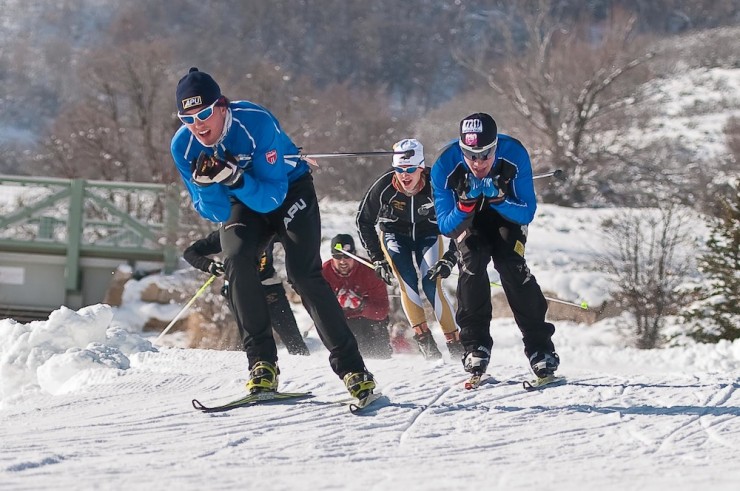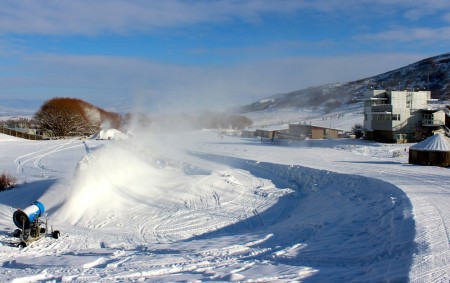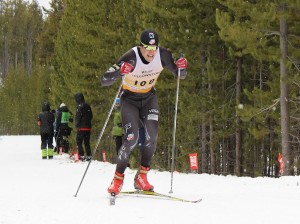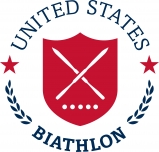
MIDWAY, Utah — It’s been exactly one month since the domestic field last met. With mere hours to go before the first contest, tension (excitement? fear?) is running high as everyone waits to see who will draw first blood in the New Year. Athletes have had days, in some cases weeks, to train on site while sneaking wary glances at each other across the Hollow.
Though the titles up for grabs have asterisks attached (it’s hard to consider a race without Kikkan Randall or Andy Newell a true national championship), there’s still a lot riding on the outcomes of these next four races. Skiers have come to the site of the 2002 Olympic Games from all over and are here now to do essentially the same thing: ski as fast as they possibly can.
A handful are returning wide-eyed and bushy-tailed from their World Cup debuts. Vanloads of juniors and U23s are here to fight for the right to race the fastest of their peers in the world. This may also be a final opportunity to make World Championships, depending on how many athletes the U.S. decides to bring.
There’s even something called the College Cup, where student-athletes score points throughout the week for their teams like they would in an NCAA race. (Side note: why not also have a generic team cup, for any club or program to score in? Or a relay?)
First up this week is the 1.4 k classic sprint. A few important factors are at play in the opening event:
- It’s at altitude.
- The course is fast enough for people to be considering skate skis.
- Everyone [better] know what obstruction is.
- There is snow, and lots of it. (Also, snow guns. The curse is broken!)
- For both men and women it’s a pretty deep, well-matched field. There are a lot of people who could reasonably end up in the A-final.

The course will favor smart racing and fast skiing. After leaving the stadium the tracks veer left to climb up to a plateau, dip under a bridge, then curve up to the high point. From there a blisteringly fast downhill slingshots around to the back side of the course and returns to the stadium for a long straightaway into the finish.
Aside from the skate ski thing (which is only really at play for the men), Alaska Pacific University’s Sadie Bjornsen thought the biggest factor in the sprint would be positioning into the major downhill.
“There’s always the slingshot corner at the bottom. From there it’s about not getting blocked and getting in the right place,” the current SuperTour leader said. “I don’t want to give any secrets away but I think that corner is going to be the biggest thing.”
She practiced going into that corner with her teammates repeatedly on Tuesday, each time at different positions in the pack, and has a good idea of what works.
“Maybe now we all have the same tactic, but then it’s really about who’s the strongest,” Bjornsen said. “This is also a much different classic sprint course than we skied on in Bozeman; I think new strengths will come out.”
Her brother Erik, also leading the SuperTour, added that even though the slingshot effect would be present, he’s not afraid of leading off the top of the final hill.
“I think a lot of people are kind of scared of leading down the last hill, but I’m not too worried about it,” he said. “I’ll go how I feel in the position that I’m at; I’m not going to be trying to be near the back at the top of the hill, or in second… If there’s an opportunity to break up the pack before the top I’ll maybe do that.”
In his run-throughs of the course, Bjornsen didn’t find that leading before the descent was all that dangerous.
“I was out in front once on the downhill, and you get sucked up a little bit but there’s still time to move from third to first going around that corner going into the finish,” he said.
Sylvan Ellefson (SSCV Team HomeGrown), back on the U.S. circuit from his stint on the World Cup, thought the final uphill under the bridge could be important as well, particularly if people decide to use skate equipment.
“I think you carry a lot of speed into that hill and you can definitely double-pole up it, if conditions are fast enough, and then you’ll be able to fly off it,” Ellefson said, adding that the speed of the tracks on that hill, the steepest on the course, would determine whether people chose skate skis.
“If you have to get to the side to herringbone it might be quite sloppy,” he said. “If you’re strong enough to get over the hill you should be fine.”
So that’s the lay of the land. Without further ado, FasterSkier’s official classic sprint predictions:

Women:
1. Sadie Bjornsen (APU/U.S. Ski Team): She won the classic sprint in Bozeman, Mont., and is about to race in her first national championship in two years, having missed the week in Rumford last January due to illness. Getting sidelined like that makes one hungry, so my money’s on Bjornson.
2. Sophie Caldwell (SMS T2): Two words: Quebec. Fourteenth. That was a flat skate race, but she’s also an incredibly good classic strider and does well on courses that require tactical skiing.
3. Rosie Brennan (APU): She grew up skiing these courses and rumor has it she’s half-seriously considering skate skis. She’s that strong.
4. Lauren Fritz (APU): In Montana she demonstrated the best racing of her career, and coming off the high of racing her first World Cups she should be in top form on Wednesday.
5. Corey Stock (Dartmouth): She was third in Bozeman; fifth is a conservative pick. She, too, is coming off her debut World Cup, and at this point we’re done pointing out that she’s really good for her age. She’s just good, period.
6. Kate Fitzgerald (APU): She’s just a safe all-around bet. Fitzgeralnd is consistent and lays herself out every time she steps on the line.

Men:
1. Skyler Davis (SMS T2/U.S. Ski Team): This would be a first career national title for Davis, but after skiing so well in Canmore (and this course has a similar slingshot-y downhill), he’s on the verge of reaching the top of that podium.
2. Erik Bjornsen (APU/U.S. Ski Team): Has had a more consistent start to his domestic season than anyone else and is clearly having the best winter of his career. Bjornsen also thinks he’s a podium contender in any of the four races this week.
3. Reese Hanneman (APU): Like Davis and Bjornsen, is finding himself more regularly at the top of sprint results this year and is a safe bet for the podium.
4. Dakota Blackhorse-von Jess (Bend Endurance Academy): With a 38th in the Quebec City sprint, Blackhorse-von Jess is in pretty good form. Thrown in the altitude factor and the potential for double-poling, and it could be his day.
5. Eric Packer (SMS T2): He’s gotten off to a relatively slow start this winter. Maybe he’ll be closer to the kind of form that won him the classic sprint at SuperTour Finals, but it’s hard to say with such a long time since he last raced.
6. Miles Havlick (University of Utah): Total wild guess. This is his home course and he’s a strong classic skier. All he has to do is make it through the quarters and be third in the semis.
The classic sprint begins at 10:00 a.m. MST, and after the completion of the senior heats junior heats will be run on the same course. Results will be available on Summit Timing.
Audrey Mangan
Audrey Mangan (@audreymangan) is an Associate Editor at FasterSkier and lives in Colorado. She learned to love skiing at home in Western New York.


